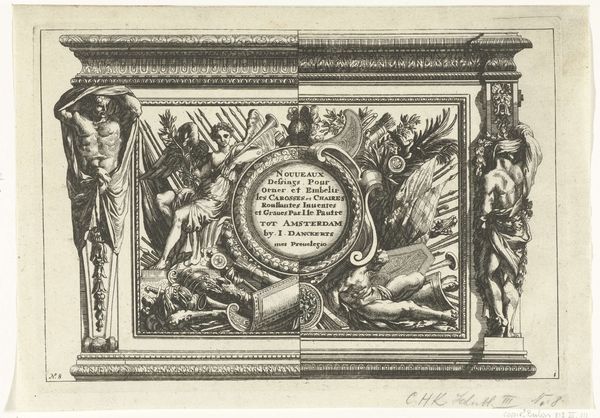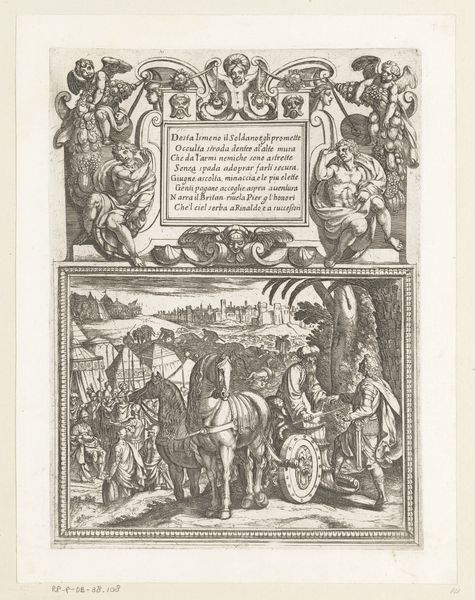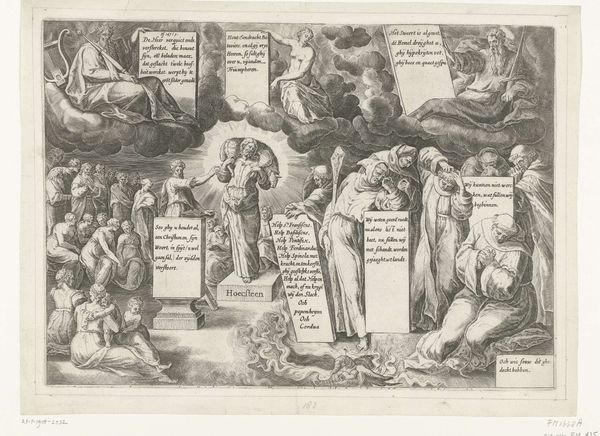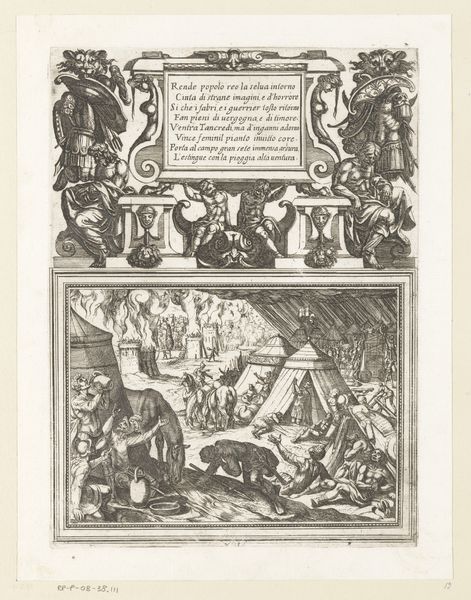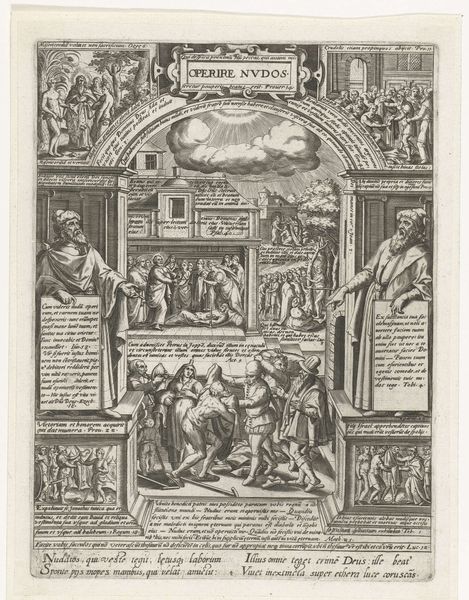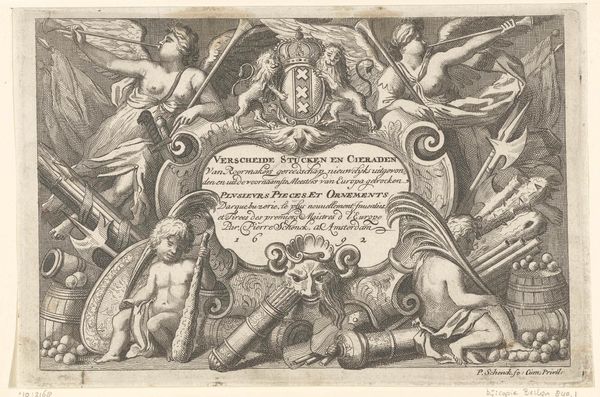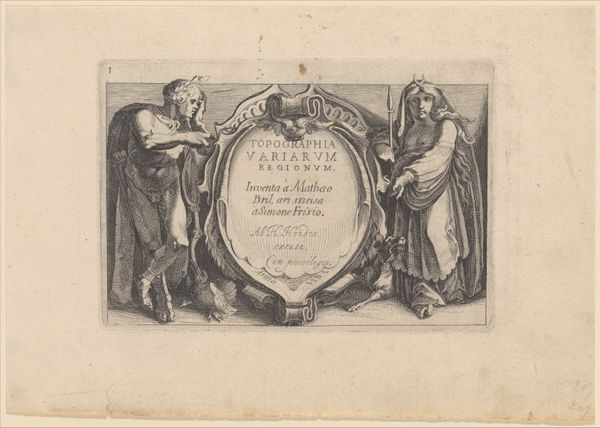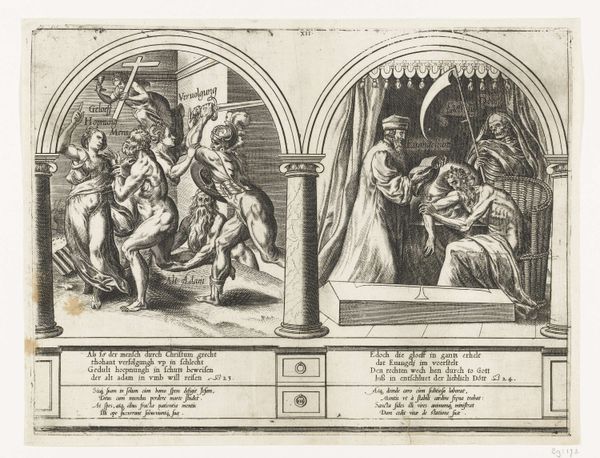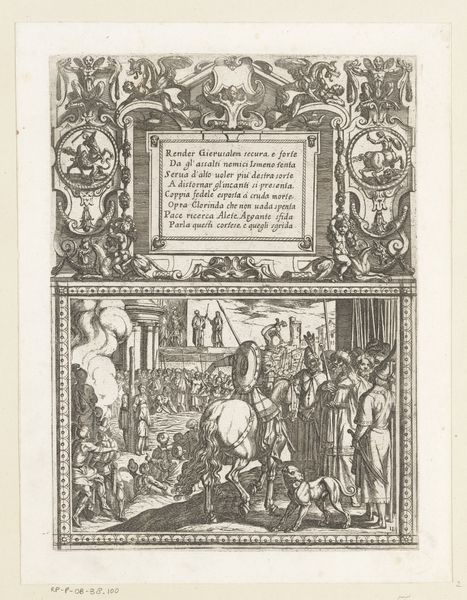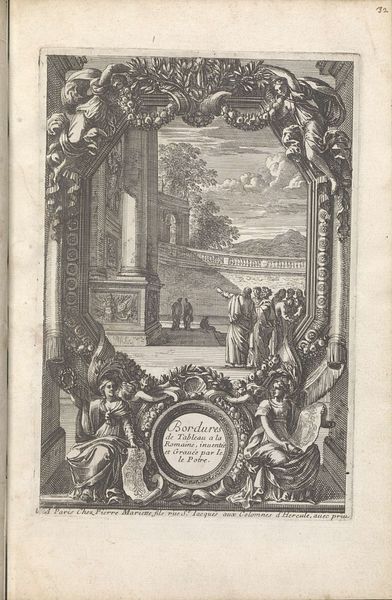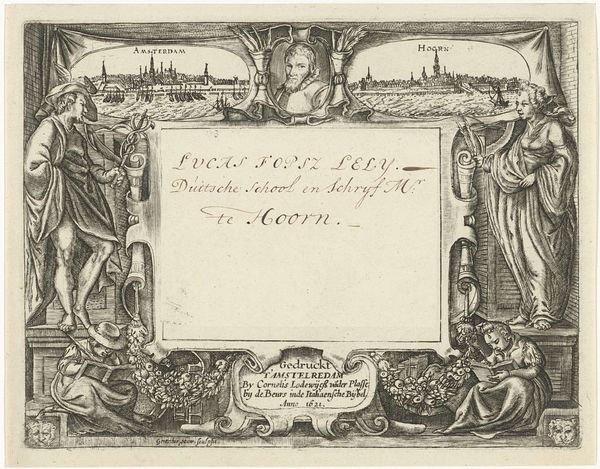
Titelprent van Passio, mors et resurrection dn. Nostri Jesu Christ 1585 - 1586
0:00
0:00
print, intaglio, engraving
#
pen drawing
# print
#
intaglio
#
figuration
#
11_renaissance
#
line
#
history-painting
#
northern-renaissance
#
engraving
Dimensions: width 265 mm, height 194 mm
Copyright: Rijks Museum: Open Domain
Curator: We’re looking at the "Titelprent van Passio, mors et resurrectio dn. Nostri Jesu Christ," created by Philips Galle between 1585 and 1586. It's an engraving, done in the intaglio printmaking technique, currently held at the Rijksmuseum. What’s your initial reaction to it? Editor: It feels like a carefully constructed stage for a profound story, somber, theatrical. The line work is so precise. Almost like watching a memory being precisely recalled. Curator: That's a fitting description. Galle, working in the Northern Renaissance tradition, was very interested in imbuing images with layers of symbolic meaning. Take the Passion, Death, and Resurrection depicted, with associated iconography from saints. What emotional weight does that imagery hold now, do you think? Editor: Well, Galle clearly situated this at a critical point in religious history. Images such as this are a stark reminder of the role art played in disseminating and reinforcing narratives, solidifying beliefs that have subsequently fueled social division, persecution, and immense power structures. Curator: That’s an astute observation. The engraving style, with its emphasis on clear, precise lines, reflects the clarity of doctrine that was sought at that time. Notice, the way figures kneel before their emblematic animals? St Mark and his lion, St. Luke and his ox? How these animals act as witnesses. The evangelists are receiving inspiration for their texts, creating scripture. Editor: Exactly! And it’s worth considering who was able to read those texts. For the largely illiterate population, images like this functioned as vital conduits of information and ideology, dictating a certain moral and spiritual order. They served a particular cultural agenda. Curator: I see your point, but perhaps there's something timeless here as well. Galle’s arrangement and use of symbolism evokes something powerful for all those who can witness the scene. Look at the depth created. Figures and expressions. It serves as a mnemonic aid. A visual representation of important religious content. Editor: I agree with that to some degree. The way Galle combined so many events in a unified pictorial space tells us so much about 16th century methods of religious communication and control. It shows how a particular cultural memory was actively constructed. Curator: Examining its themes and recognizing Galle’s attention to symbolic visual order help us not only decode the religious message, but understand better how the artwork impacted the people of its time. Editor: And interrogating these historical power structures reveals so much about the impact images can have on constructing ideologies. A constant push and pull between history, narrative, and faith, it’s quite thought provoking.
Comments
No comments
Be the first to comment and join the conversation on the ultimate creative platform.
